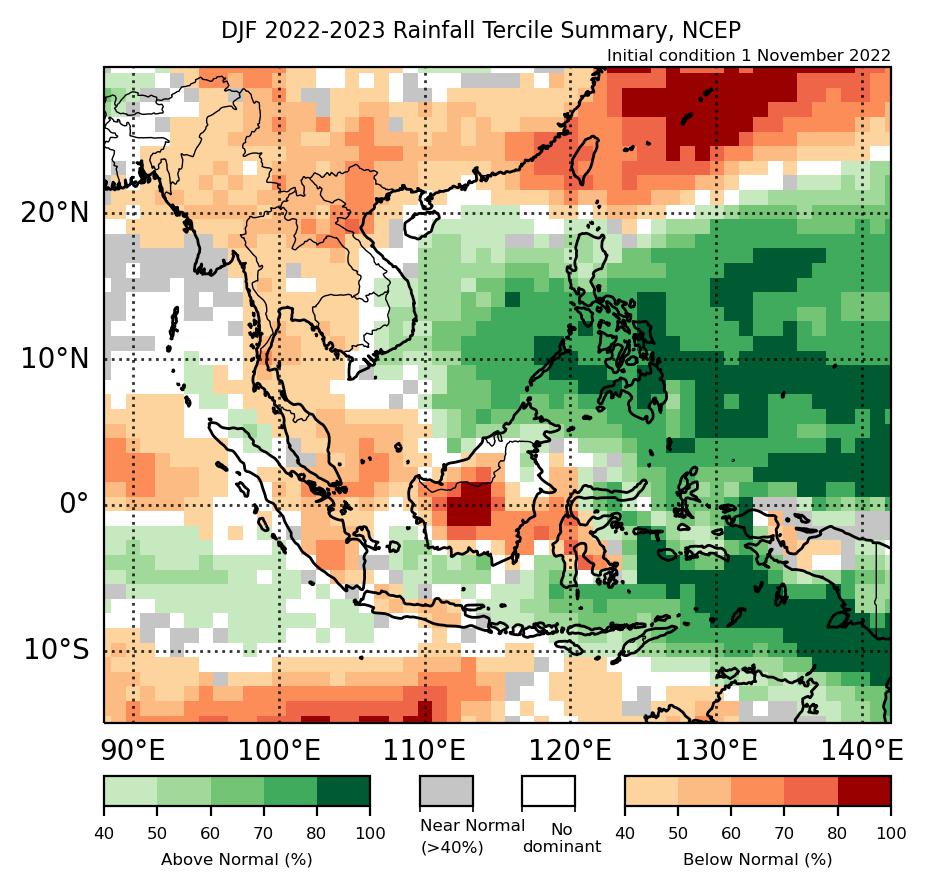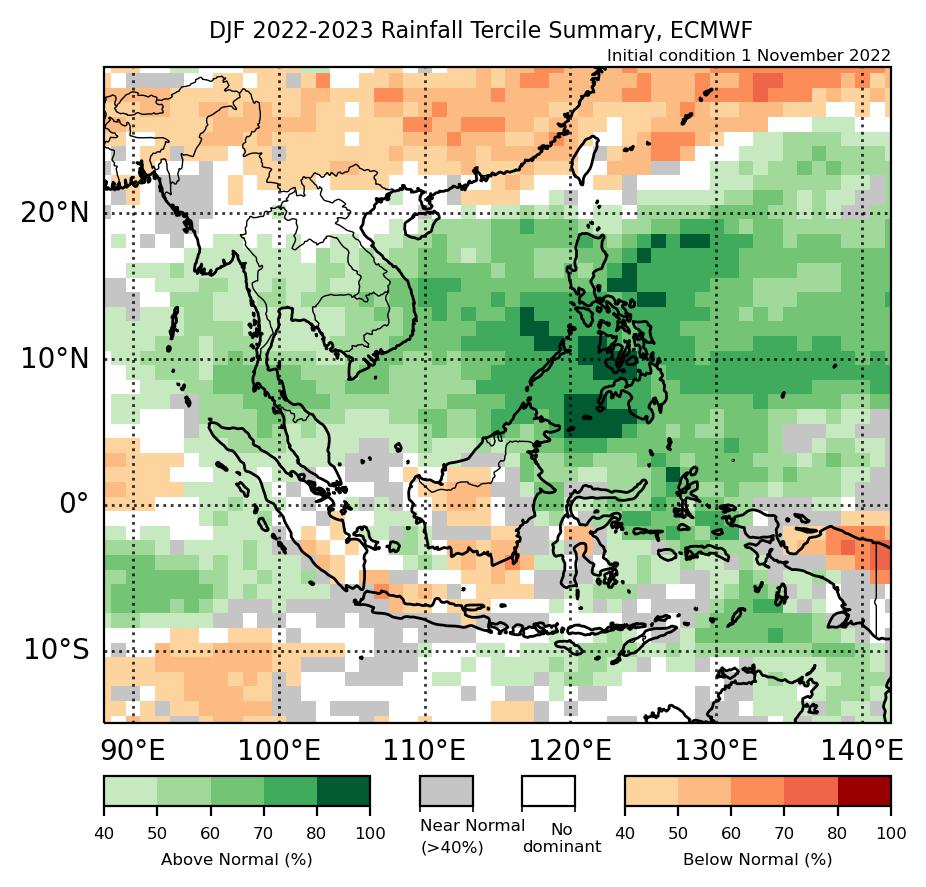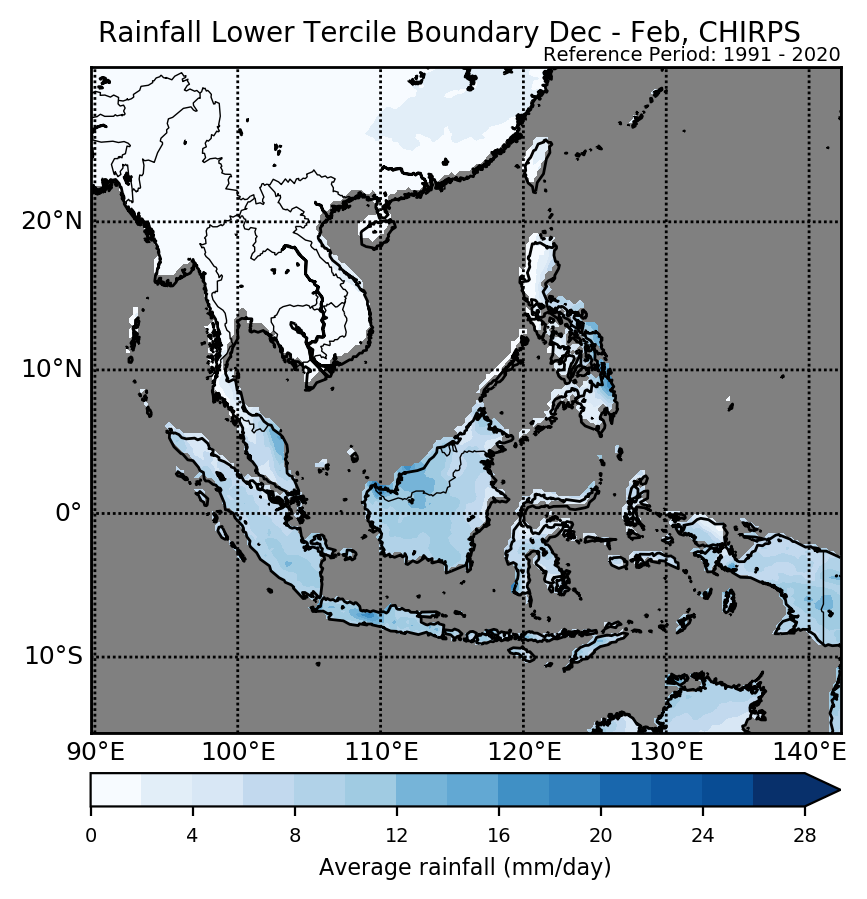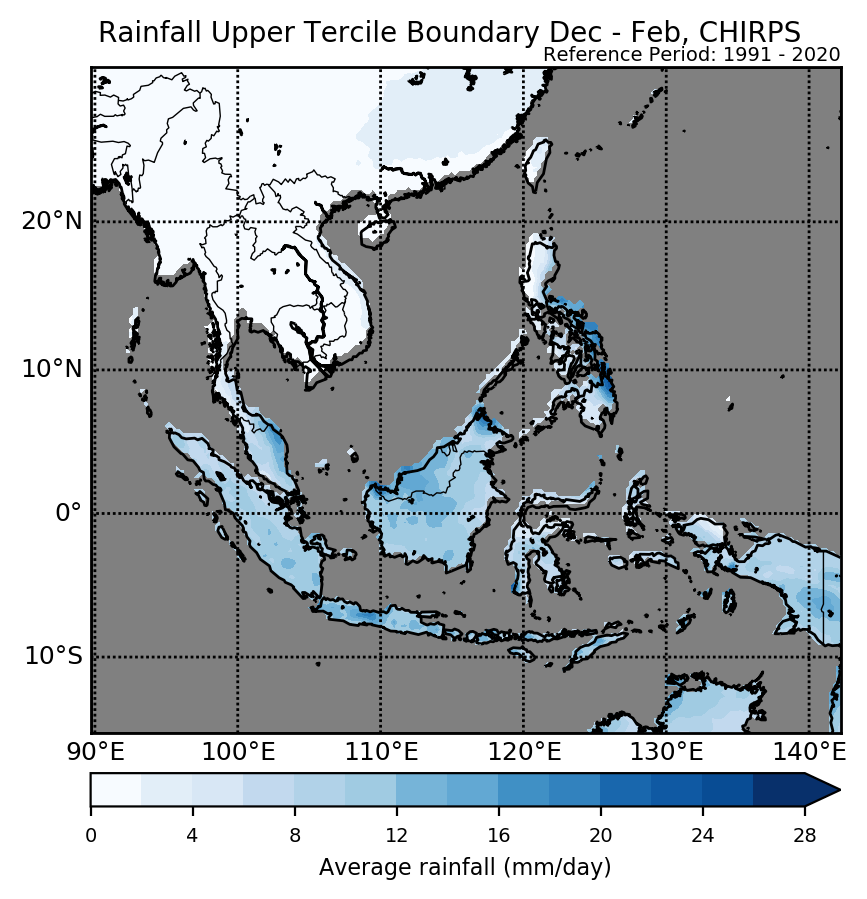Rainfall
Seasonal Rainfall Outlook: December 2022 - February 2023 (DJF)
Issued: 30 Nov 2022
For DJF 2022-2023, above-normal rainfall is predicted over much of the eastern and northwestern Maritime Continent, as well as southeastern Mainland southeast Asia. Below-normal rainfall is predicted over parts of the equatorial region.
For DJF 2022-2023, based on the multi-model ensemble (Figure 4), there is an increased chance of above-normal rainfall for much of the eastern and northwestern Maritime Continent, while below- to near-normal rainfall or no dominant tercile is predicted over parts of the equatorial region. The NCEP (Figure 1) and UK Met Office (Figure 3) models are most confident of below-normal rainfall over Borneo, while UK Met Office (Figure 2) predict a smaller increase in chance of below-normal rainfall. The models’ skill is moderate to relatively high for northeastern parts of the Maritime Continent and low to moderate elsewhere.
For Mainland Southeast Asia, based on the multi-model ensemble (Figure 4), there is an increase in chance of above-normal rainfall for the southeastern region, and below-normal rainfall for parts of northern Mainland Southeast Asia. However, model skill is low for this season for Mainland Southeast Asia.

Figure 1: Rainfall tercile summary predictions of NCEP model for DJF 2022-2023 (contains modified Copernicus C3S information).

Figure 1: Rainfall tercile summary predictions of ECMWF model for DJF 2022-2023 (contains modified Copernicus C3S information).

Figure 5: Average climatological rainfall's lower tercile boundary for DJF based on CHIRPS (Reference period: 1991-2020).

Figure 6: Average climatological rainfall's upper tercile boundary for DJF based on CHIRPS (Reference period: 1991-2020).
The qualitative outlook is assessed for the region in general. For specific updates on the national scale, the relevant ASEAN National Meteorological and Hydrological Services should be consulted.